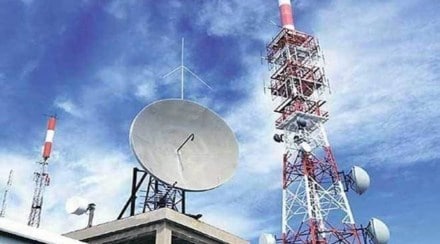The revenue of three private mobile operators is expected to grow at 20-25% in the current fiscal on the back of a healthy rise in average revenue per user (Arpu) due to tariff hikes. According to Crisil, the Arpu should grow 15-20% in FY23 due to the tariff hikes undertaken by the companies in November 2021, as well as, another anticipated increase in the second half of this year.
As the players are expected to spend incrementally on the network and regulatory capex in FY23, Arpu growth and tariff hikes could ease some pressure on their books. “As a result, the revenue of the top three players is expected to grow a robust 20-25% this fiscal. The earnings before interest, tax, depreciation and amortisation (Ebitda) is seen expanding 180-220 bps for the year,” Crisil said in a report.
As per telecom sector analysts, the telecom firms are likely to announce another tariff hikes, most probably after the 5G spectrum auctions, to improve Arpu and weed out low paying active subscribers. Growth in Arpu is essential for realising a healthy bottom line and sustaining profitable growth. The lower Arpu limits players’ capacity to invest in network and spectrum, resulting in poor service offerings. Over the years, players have witnessed muted Arpu because of price wars, thus limiting their network capex, increasing debt and hurting profitability.
However, the earlier apprehension regarding hiking tariffs seems to have gone now as, despite the hikes undertaken in November 2021, the active subscriber base of the industry has risen in the last few months. What the operators have lost are low-end customers, which were mostly inactive, meaning having more than one or two connections.
The three private players lost 37 million subscribers last fiscal as SIM consolidation weeded out inactive ones. But their active subscriber base grew 3% year-on-year, by 29 million. As per Crisil, Reliance Jio saw its total subscriber base fall sharply between August 2021 and February 2022. However, the share of its active subscribers reached 94% in March 2022, compared with 78% in the first quarter of last fiscal as the active subscriber base remained unaffected because of SIM consolidation.
Similarly, Bharti Airtel added 11 million active subscribers during 2022 fiscal and its active subscriber percentage improved to 99% in the fourth quarter. Vodafone Idea though lost 30 million active subscribers in the 2022 fiscal. “It continued to witness a decline in its subscriber base because of low capex in 4G and deterioration of services, while its peers have incrementally invested in 4G sites,” Crisil said.
Vodafone Idea’s subscriber decline resulted in a loss of its leadership across circles. It lost active-subscriber leadership in five circles, while Reliance Jio gained six more. Interestingly, the increase in active subscribers has been driven by an increase in rural subscribers across category A, B, and C circles. Crisil expects rural teledensity to increase in fiscal 2023, aiding a 3-5% increase in total wireless subscribers, while the active-subscriber base is expected to grow faster at 4-6%.
